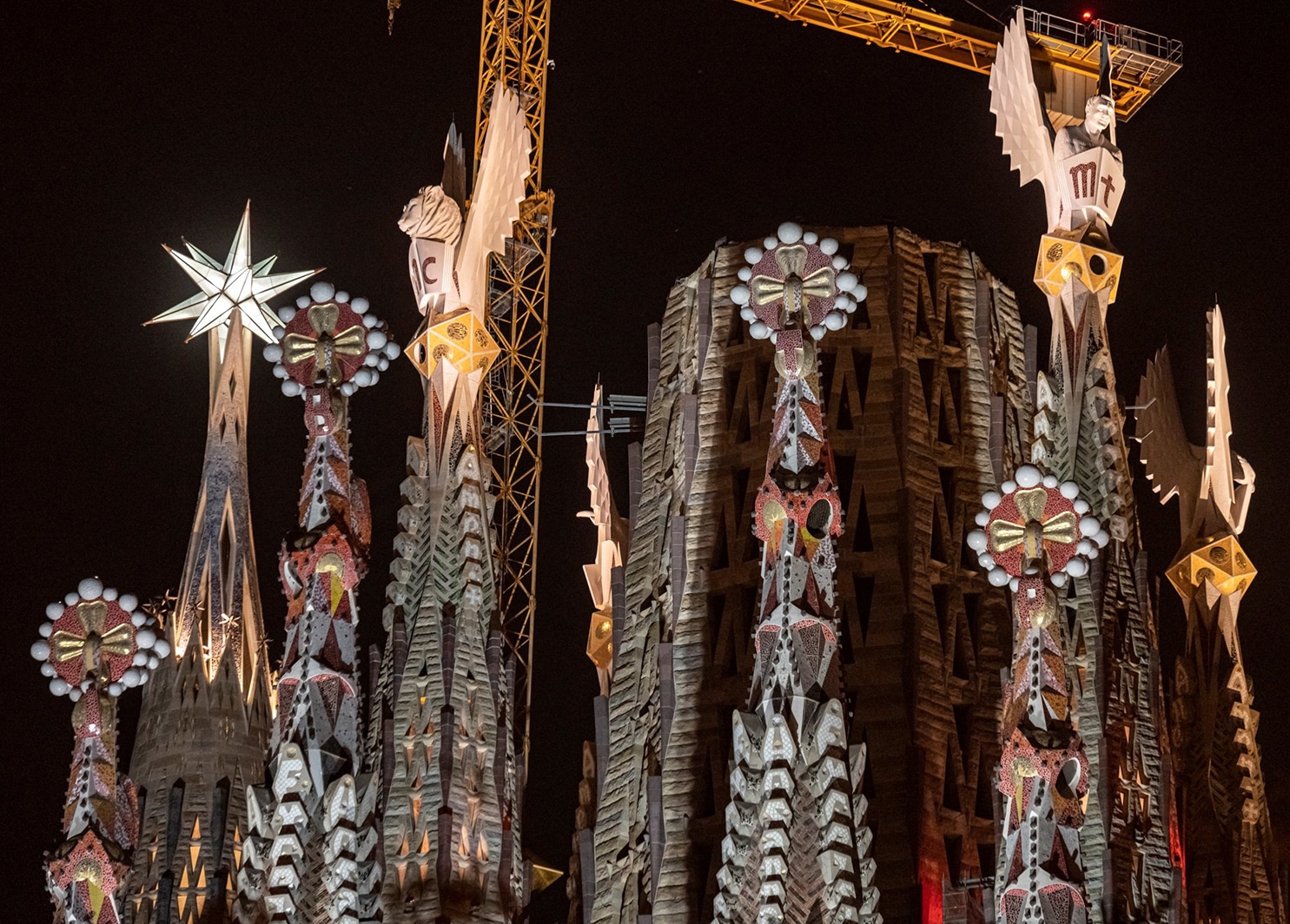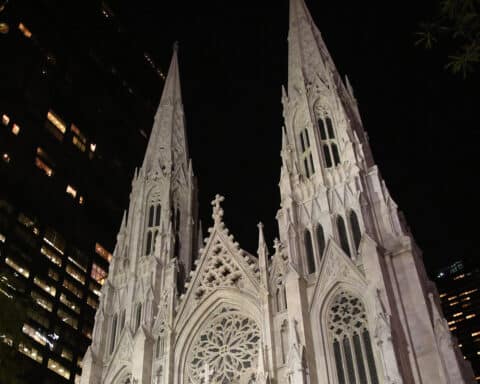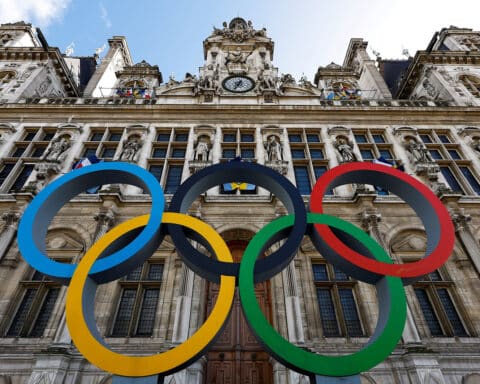BARCELONA, Spain (OSV News) — It seemed like one of Antonio Gaudí’s dreams come true.
On Nov. 12, the papal nuncio to Spain, Archbishop Bernardito Auza, blessed the towers of the Evangelists of the famous Sagrada Familía Basilica in Barcelona. Gaudí, a legendary Catalan architect, started working on the now-iconic basilica 140 years ago. Five generations now have watched the church’s progress.
Gaudí was a man of prayer. The anecdote goes that when he was entrusted with the restoration of the cathedral on the Spanish island of Mallorca in 1903, 20 years into his work on the Sagrada Familía, he spent a full year going to the church in the mornings to absorb it. Only then, when he had observed, felt, touched and prayed over the place, he presented his project to the bishop.
The Barcelona basilica’s rector, Msgr. Josep María Turull, told the Spanish Catholic weekly Alfa y Omega that, if Gaudí were alive, he would be “very happy” without caring about the extra century of work because, as he used to say, the “master is in no hurry.”
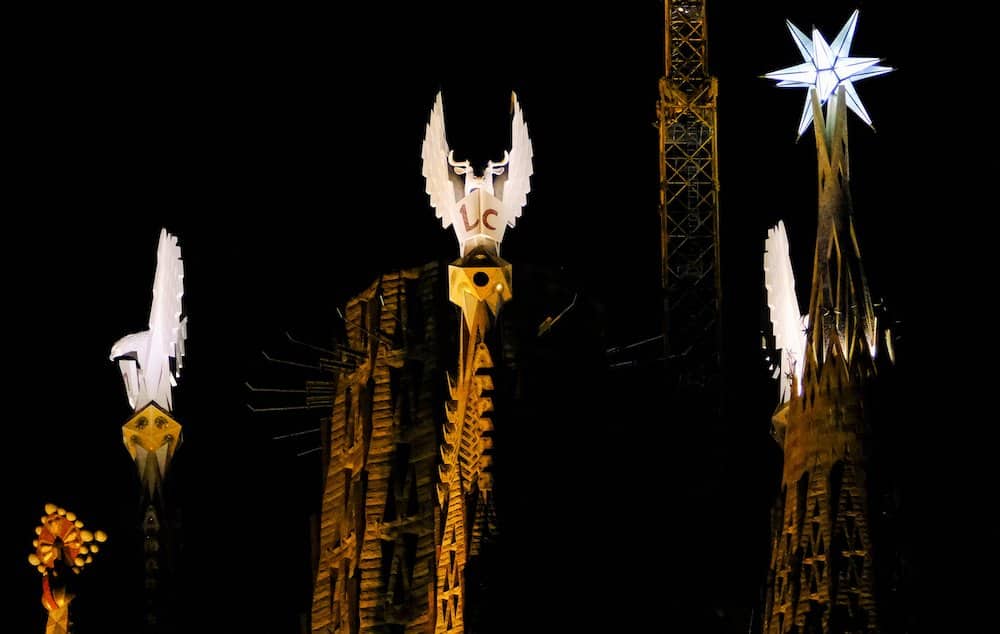
A true work of prayer
“This spectacular thing,” added the rector in reference to the work of the Catalan architect, “is not the result of a dream on a summer night but of a lot of time of meditation, work, and prayer.” Every day when he finished working, the architect went to the basilica where, always on the same bench, he sat to pray. He also regularly traveled to the Oratory of St. Philip Neri for confession and spiritual accompaniment “so that what he built was coherent theologically and liturgically,” Msgr. Turull said.
“Gaudí’s evangelical and evangelizing approach can only come from someone who is very united to God and exudes holiness,” the priest added.
The architect’s idea, Msgr. Turull pointed out that from the street the eyes should rise upward: The first thing you see are the 12 towers of the Apostles. If you continue, you reach the towers of the Evangelists, which “lead us to raise our gaze a little higher,” toward the tower of Jesus Christ, which is scheduled for completion in 2026.
“Beauty is capable of opening the mouth of admiration and heart to God,” said Msgr. Turull, which is what happens to people when they go to the Sagrada Familía. Gaudí manages to provoke amazement, he added, that which Pope Francis speaks of as a fundamental element of the liturgy and that opens up to God. In the celebrations in the church, “everything, the space, the light, the music, leads us to live the mystery and, as Gaudí wanted, in each Eucharist we participate in the heavenly Jerusalem and in the maximum communion with God.”
A witness to Jesus Christ
Archbishop Auza said during his homily Nov. 12 that the towers “push us to be witnesses of the Lord in the middle of the world,” like the Evangelists, “that in unison evoke the presence of Christ.” He also indicated how these new elements “move us all to look where Gaudí truly looked, to the incarnate word of God in Mary.”
Concelebrating alongside the nuncio Nov. 12 were Cardinal Juan José Omella of Barcelona, Cardinal Lluís Martínez Sistach, the retired archbishop of Barcelona, and Auxiliary Bishop David Abadías of Barcelona. Regional politicians were present among the 2,000 people gathered for the event.
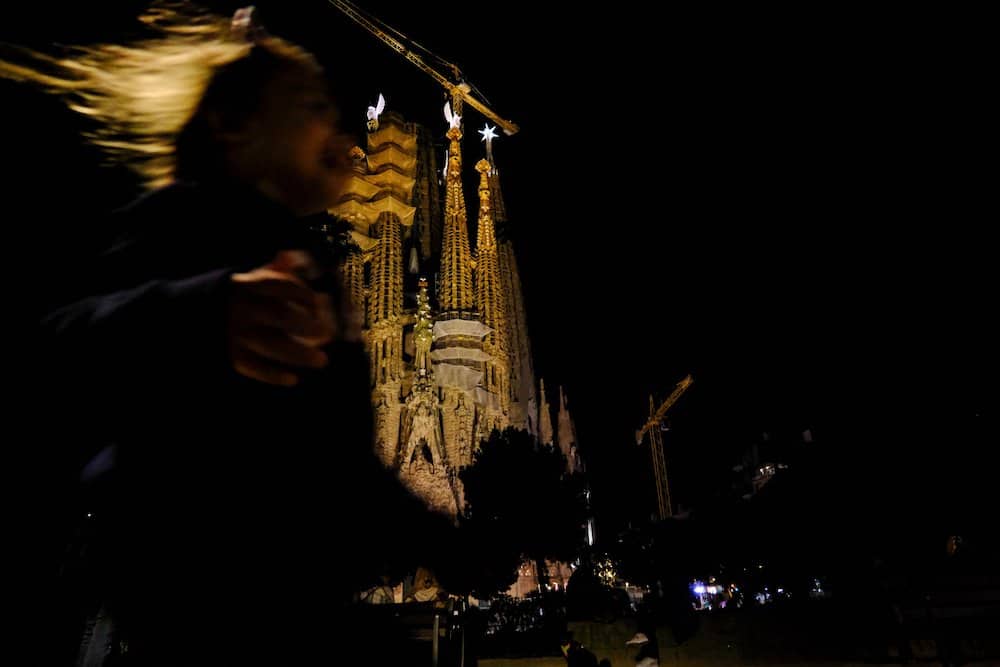
After the Mass, the four newly opened towers were blessed. “The blessing is a way of putting them in God’s hands and asking them to be an instrument so that his good reaches more people,” Archbishop Auza said. Thus, just as Mary’s tower “lit the star of hope in so many hearts,” in this case the towers “would like to invite us to rediscover the four Gospels in order, through them, to know Jesus Christ better, to love him more and to follow him more intensely,” the nuncio said.
Construction work on the towers of the Evangelists began in 2016. They surround the future tower of Jesus Christ and measure 442 feet high. First were those of Luke and Mark, finished in 2022 with the placement of the figures with which they are identified: the ox in the first case and the lion in the second. Since the end of September 2023, one could see the completed one of Matthew, with the human figure, and John, with the eagle.
The sculptures are the work of Xavier Medina-Campeny, a Spanish sculptor.
Jesus Christ tower set for completion in 2026
Of the six towers designed by Gaudí for the Sagrada Familía, the one of Mary was inaugurated for the feast of the Immaculate Conception on Dec. 8, 2021. It is crowned by a 12-pointed star 24 feet in diameter.
The first thing the people of the neighborhood do in the morning, Msgr. Turull observed, “is to look at Mary’s star, and the last thing at night is to entrust themselves to Mary before going to sleep.” A star that “fills many sick people and older people with hope.”
With the completion of the Jesus Christ tower scheduled for 2026, the construction work on the entire Sagrada Familía is expected to be completed. The final tower will reach a height of 565 feet, making it the tallest in the Sagrada Familía, the tallest building in Barcelona and the tallest church tower in the world.
Begoña Aragonese is a staff writer for Alfa y Omega, a Spanish Catholic weekly. The story was originally published in Spanish in Alfa y Omega.

